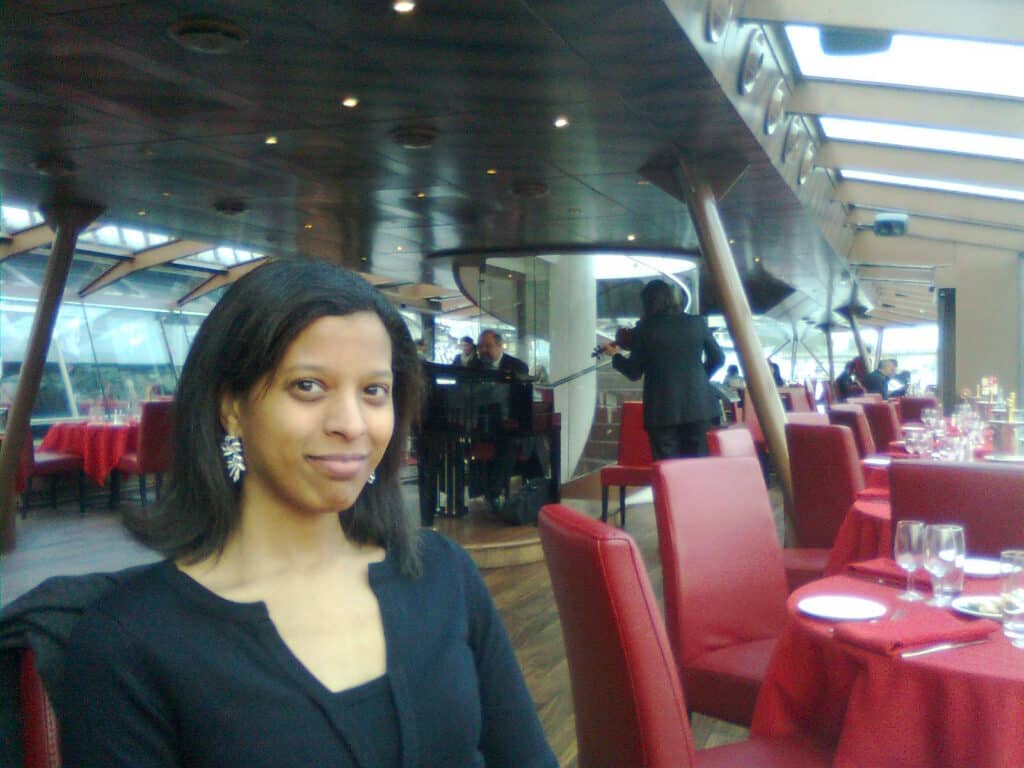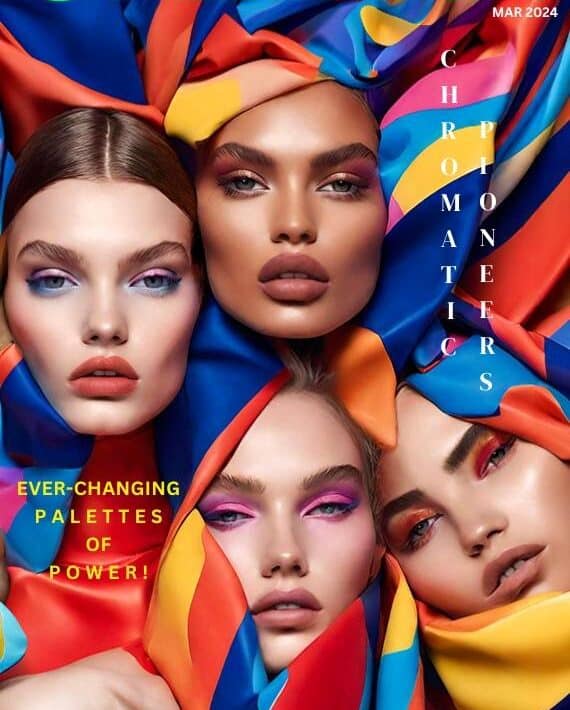Reflections of Elegance: Alina Balijja’s Path to Empowering Self-Image through Style.


The author of “Elegance and Dress Code for Dark-Skinned Women” examines the relationship between self-perception, cultural identity, and societal beauty standards through her groundbreaking book
(Interview by Manuela Pirola)
Self-image and love are deeply intertwined, influencing how individuals perceive themselves and interact with the world. Authenticity is the cornerstone of a positive self-image. It involves embracing one’s true self, including all of one’s unique attributes and characteristics.
Alina Balijja is the author of “Elegance and Dress Code for Dark-Skinned Women“, a brand new guide offering pills of fashion and “bon ton”, in which Alina addresses, in a simple but incisive way, the style problems of non-caucasian ladies, who – even today, despite globalization – experience situations of inadequacy compared to Western fashion. For dark-skinned women, authenticity can be a powerful tool for empowerment. By celebrating their natural beauty, cultural heritage and individuality, they can challenge societal norms and redefine what it means to be beautiful, in a world still dominated by stereotypes favouring the white race.
Alina, also of mixed-race, with an Italian mother and Ugandan father, proposes a mind-blowing insight with the aim of creating “a bridge between different cultures, in the name of a common appreciation for beauty and elegance”.

Young Alina Balijja; Image Source: Alina Balijja
• What inspired you to write a book specifically for dark-skinned women, and what do you hope readers take away from it?
I was inspired by the pursuit of beauty—not just in appearance, but in confidence, self-worth, and the way we present ourselves to the world. We live in challenging times, surrounded by wars, economic instability, and social unrest. I asked myself: What can I contribute, in my own way, to help women feel empowered and elevate their quality of life? As an image consultant, I have seen firsthand how the way we perceive ourselves shapes our interactions, our relationships, and ultimately, our place in society.
Women have always held a central role in shaping communities, and their influence should never be underestimated. But for dark-skinned women, the journey to self-acceptance is often more complex, as skin color remains a battleground of prejudice and misconception. This book is deeply personal to me because I, too, have lived this reality. As an Afro-descendant born in Italy in 1974 to a Ugandan father and an Italian mother, I grew up in an environment where there were no beauty standards that reflected me. The world around me did not mirror my existence—there were no references, no images, no affirmations of beauty that looked like mine.
The struggle to find aesthetic representation and a sense of belonging shaped my self-image and, at times, my self-esteem. When I became an image consultant, I realized that fashion’s unspoken rules were still largely white-centric, leaving many women of color feeling excluded from the mainstream standards of elegance and style. This realization drove me to rewrite the narrative—to adapt, redefine, and create a new space where dark-skinned women could see themselves reflected in beauty, sophistication, and grace.
Through this book, I hope to offer more than just styling advice—I want to encourage a rediscovery of personal expression, self-respect, and the power of non-verbal communication. Elegance and aesthetic awareness are not just about fashion; they are about respect—both for oneself and for others. Love cannot exist without respect, and that starts with how we see ourselves. By becoming more conscious of the silent messages we send through our image, we take ownership of our presence in the world—whether at home, at work, or in society at large.
This book is an invitation for dark-skinned women to reclaim their space, to define their own standards of beauty, and to move through life with the confidence that they deserve.
•How do you see the connection between self-love and the way we dress?
The way we dress is a direct reflection of how we see ourselves. For too long, we’ve been conditioned to follow trends, adapting to what’s in style rather than considering what truly represents us. But it’s time to flip the script—self-love should come first, fashion second.
When we dress with intention, choosing clothes that honor our individuality rather than just what’s trending, we send a message—not just to the world, but to ourselves. The way we present ourselves shapes the way we’re perceived, but more importantly, it reinforces our own sense of worth.
Loving ourselves means choosing clothing that empowers us, that feels authentic, that highlights our essence rather than hides it. When we respect ourselves, we naturally command respect from others. Fashion should never diminish who we are—it should elevate us.
•What challenges did you face in presenting a concept of elegance that balances individuality with universal appeal?
I don’t see universal appeal and individuality as opposites. True elegance isn’t about fitting into a mold—it’s about embracing who you are, in a way that feels authentic and effortless. When style enhances a person’s unique features—both in color and form—it naturally resonates on a universal level.
Aesthetic harmony exists all around us; it’s in nature, in art, in the effortless way certain things just belong. If we shift our focus inward and celebrate our individual beauty, we uncover an elegance that feels both deeply personal and inherently timeless. The challenge is not in finding the balance—it’s in encouraging people to trust their own reflection rather than chasing an external standard.
•How do you think embracing cultural identity influences one’s confidence and sense of beauty?
This is such an important conversation, especially in societies where beauty standards have long been shaped by a Western lens. As a dark-skinned woman in Italy, I’ve seen firsthand how clichés and stereotypes can make it difficult to reconcile cultural identity with mainstream ideals of elegance. We talk about globalization, yet true representation still feels selective—as if non-Western beauty must be “adjusted” to fit a Western framework.
But real confidence comes from seeing ourselves clearly—without filters, without comparison, without compromise. It starts with recognizing that cultural identity is not something to blend in or soften, but something to embrace. The color of our skin, our heritage, our features—they are not barriers to beauty; they are expressions of it.

Alina Balijja, The Author; Image Source: Alina Balijja
As an image consultant, I know that style isn’t about geography—it’s about alignment. When we dress in a way that reflects who we truly are, rather than who we’re told to be, we find an authenticity that naturally breeds confidence. Self-esteem is deeply tied to self-perception, and the more we accept and celebrate our cultural identity, the more we radiate a beauty that is timeless, personal, and completely our own. True elegance isn’t about following trends—it’s about honoring oneself.
• Why do you speak about “dress code”? What “dress code” is it?
Dress code is a part of etiquette that guides how we dress for different occasions, creating a common language of respect and social presence. Traditionally, it stems from Western history and nobility, shaping ideas of elegance and formality.
However, these rules were not designed with dark-skinned individuals in mind, making it difficult to apply them fully without adaptation. For those of us who value etiquette, the challenge isn’t about fitting into a rigid system, but about reshaping it to reflect diversity and individuality.
Dress code still matters today because it is a form of non-verbal communication, allowing us to present ourselves with intention and confidence in both personal and professional spaces. When understood and adapted, it becomes not a limitation, but a tool for self-empowerment.
• Whom in particular do you recommend reading your book and why?
This book is for dark-skinned women around the world who want to navigate beauty, fashion, and self-presentation with confidence. It speaks to three key groups:
First, women looking to elevate their professional and personal image—those entering the workforce or aiming to build a presence that communicates confidence and credibility. The book offers practical insights on shaping an intentional self-image that aligns with ambition and authenticity.
Second, young women struggling with self-perception. Growing up without representation can make it difficult to see your own beauty, and this book serves as a guide to embracing individuality. To support this, I’ve created an interactive website, accessible via QR code, where readers can share their stories, ask questions, and even suggest topics for future books. Through the site, readers can also download The Elegance of Natural Fabrics, a free guide on dressing beautifully using natural materials.
Lastly, fashion, styling, and beauty professionals will find value in this book. Understanding how skin tone influences aesthetics is essential in making informed and inclusive creative choices. Awareness of how color, texture, and style work for diverse skin tones is crucial in redefining beauty standards that truly reflect the world we live in.




